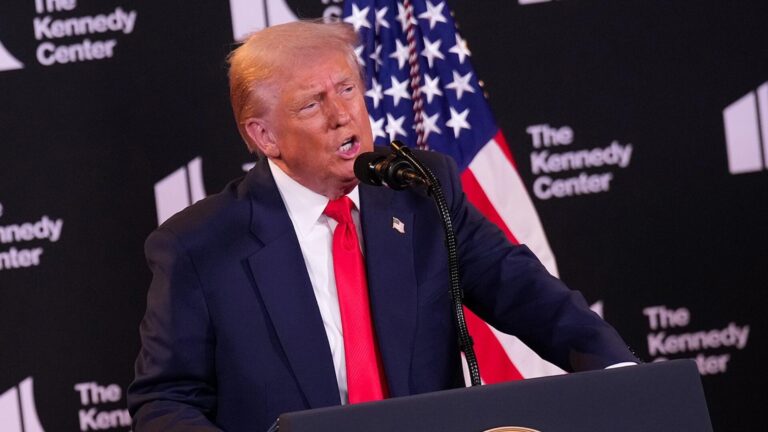The United States government has issued a draft notice proposing a steep 50% tariff on a range of Indian goods, set to take effect from August 27. This significant move marks an escalation in trade tensions between the two economic partners, raising concerns over potential impacts on bilateral trade and market dynamics. The proposed tariffs target several key Indian exports, reflecting ongoing disputes and strategic economic considerations shaping U.S. trade policy under the Trump administration.
Trump Administration Proposes 50 Percent Tariffs on Indian Imports Targeting Key Sectors
The Trump administration has unveiled a draft notification proposing the imposition of steep tariffs, reaching up to 50 percent, on a wide array of Indian imports. This move targets critical sectors including pharmaceuticals, textiles, and automotive components, heightening trade tensions between the two nations. The tariffs are slated to take effect starting August 27, sending ripples through industries reliant on cross-border supply chains and potentially increasing costs for U.S. manufacturers and consumers alike.
Key commodities facing proposed tariffs include:
- Pharmaceutical ingredients and generic medicines
- Textile fabrics and finished apparel
- Automotive parts and components
- Information technology hardware
| Sector | Proposed Tariff Rate | Estimated Impact |
|---|---|---|
| Pharmaceuticals | 50% | Price hikes on generics |
| Textiles | 45% | Reduced export volumes |
| Automotive Parts | 50% | Supply chain disruptions |
| IT Hardware | 35% | Increased production costs |
Economic Impact and Trade Relations Set to Shift as U S Prepares for August 27 Implementation
The impending imposition of a 50% tariff on Indian goods by the U.S., slated for August 27, is expected to send ripples across the global economic landscape. This significant escalation in trade barriers could disrupt supply chains, elevate costs for American consumers, and force industries reliant on Indian imports to reassess sourcing strategies. Sectors such as textiles, pharmaceuticals, and steel are poised to face the brunt of these tariffs, potentially resulting in slower growth trajectories and increased market volatility.
Trade analysts warn that the move may also trigger a recalibration of bilateral trade relations between the two nations. Key consequences include:
- Reduced export volumes: Indian exporters could see diminished access to the lucrative U.S. market.
- Diversification of trade partners: Both countries may seek alternative markets to cushion the tariff impact.
- Negotiation pressures: Diplomatic dialogues may intensify to mitigate escalating trade tensions.
| Sector | Projected Impact |
|---|---|
| Textiles | Decline in exports by 20%-30% |
| Pharmaceuticals | Supply chain disruptions |
| Steel | Increased production costs |
Experts Advise Indian Exporters to Diversify Markets and Strengthen Domestic Competitiveness
Industry experts have underscored the urgency for Indian exporters to expand beyond traditional markets in light of the proposed U.S. tariffs. The draft notice introducing a 50% tariff on Indian goods, set to begin on August 27, threatens to disrupt established trade flows and escalate costs for Indian manufacturers. Analysts recommend a strategic pivot towards emerging economies in Asia, Africa, and Latin America, where demand for Indian products continues to grow and tariff barriers remain comparatively low. Such diversification would not only cushion the blow from U.S. protectionist measures but also foster sustained export resilience.
Simultaneously, strengthening domestic competitiveness is paramount to maintaining India’s global trade position. Experts highlight the need for:
- Upgrading manufacturing capabilities through technology adoption and skill development.
- Enhancing supply chain efficiencies to reduce lead times and costs.
- Investing in product quality and innovation to meet international standards and consumer preferences.
Below is a comparative table showing the potential impact on key export sectors by the tariff hike and opportunities for market diversification:
| Sector | Estimated Tariff Impact | Alternative Markets | Strategic Focus |
|---|---|---|---|
| Textiles & Apparel | High | Bangladesh, Vietnam | Cost-competitiveness, innovation |
| Pharmaceuticals | Moderate | Africa, Southeast Asia | Quality assurance, R&D |
| Automobiles | High | Latin America, Middle East | Technological upgrades, export incentives |
In Conclusion
As the U.S. moves forward with its proposed 50% tariffs on a range of Indian products, set to take effect from August 27, the development marks a significant escalation in trade tensions between the two countries. Stakeholders across industries will be closely monitoring the finalization of the tariffs and their broader economic implications. Both governments now face the challenge of navigating this dispute while balancing domestic interests and bilateral trade relations.




